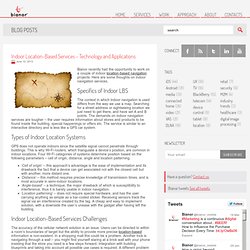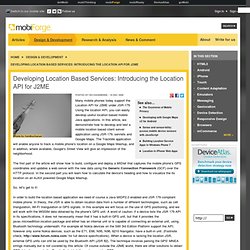

Is Serendipity Dead? Location-Based Mobile App Roamz Relaunches To Focus On User Intent Instead. When Roamz first launched its social-local-mobile* application, the thing was all about serendipity.

That is, it was all about helping users to discover lots of new things that they might not have known about before. Of course, it wasn’t alone — there was a time earlier this year, back in the heady spring days before SXSW, when seemingly every startup was all about serendipity. Strangely enough, what Roamz found was that users weren’t necessarily looking for brand new experiences every time they stepped out of the house. Instead, they knew what they wanted — kind of — and were just looking for some guidance and some idea of what other people like.
So if a user wanted some coffee, they wanted to be shown the best nearby coffee shops, not necessarily where someone got ice cream a few hours ago. Users can still use more of the serendipitous features of the Roamz app, especially in crowded areas, but it’s no longer the focus of the app. Indoor Location-Based Services – Technology and Applications. June 12, 2012 Bianor recently had the opportunity to work on a couple of indoor location-based navigation projects.

Here are some thoughts on indoor navigation services. Specifics of Indoor LBS The context in which indoor navigation is used differs from the way we use a map. Searching for a street address or sightseeing location we just need to get there, and have set A and B points. Types of Indoor Location Systems GPS does not operate indoors since the satellite signal cannot penetrate through buildings. ‘Cell of origin’ – this approach’s advantage is the ease of implementation and its drawback the fact that a device can get associated not with the closest cell but with another, more distant one.
Blogs - Indoor Positioning: The Key to Bringing Location-Based Services Indoors. “Ladies and Gentlemen, this is a general announcement: the mall will be closing in 20 minutes” One of the worst times to hear this message, as I found out, is when scrambling to buy a gift.

In my case, I was desperately hunting for a Toys’R’Us to grab a gift for a 1-year-old’s birthday party. My trusty smartphone had gotten me safely to the mall, but the Toys’R’us store was just a marker in the featureless blob that represented the mall in my maps application. After covering most of the mall, I ultimately found the store, but my search could have been much simpler if my maps application provided navigation inside the mall. Wouldn’t it be nice to have a truly seamless level of service – with all your favorite location apps performing the same whether indoors or outdoors? LBS primarily use GPS for location, yielding highly accurate positioning, but indoor situations inconveniently block out a clear view of the sky. So what if you don’t have a clear view of the sky? Gloe.
3 Ways to Use Location Based Services for Social Media Marketing. Internal Location-Based Services (ILBS) « Gregory Sims Design. Indoor Location-Based Services To Be the Next Multi-Billion Dollar Market Created by Smartphones. FARMINGTON, Conn., May 23, 2012 /PRNewswire-iReach/ -- Global Information Inc. is pleased to announce two significant new reports on Indoor Positioning, and its impact on Location-based Services: Indoor Positioning: Mapping, Technology & ServicesGPS-based LBS (Location-Based Services) face a significant hurdle: 90% of people's time is spent indoors.

As such, Indoor positioning offers significant potential for the LBS market. While GPS remains the technology of choice for many of the outdoor location-based services, there are a number of technologies vying to become the solution of choice indoors, from Wi-Fi or Bluetooth, to 'terrestrial' GPS, and acoustic or lighting-based solutions. Indoor Location-Based Services. Roamz. Developing Location Based Services: Introducing the Location API for J2ME. Many mobile phones today support the Location API for J2ME under JSR-179.

Using the location API, you can easily develop useful location based mobile Java applications. In this article, we demonstrate how to develop and test a mobile location based client server application using JSR-179, servlets and Google Maps. The TrackMe application will enable anyone to track a mobile phone's location on a Google Maps Mashup, and in addition, where available, Google's Street View will give an impression of the neighborhood. The first part of the article will show how to build, configure and deploy a MIDlet that captures the mobile phone's GPS coordinates and updates a web server with the new data using the Generic Connection Framework (GCF) over the HTTP protocol.
In the second part you will learn how to calculate the device's heading and how to visualize the its location on an AJAX powered Google Maps Mashup. So, let's get to it! Getting started Part I: The TrackMe MIDlet Here's what we have so far: SCVNGR.